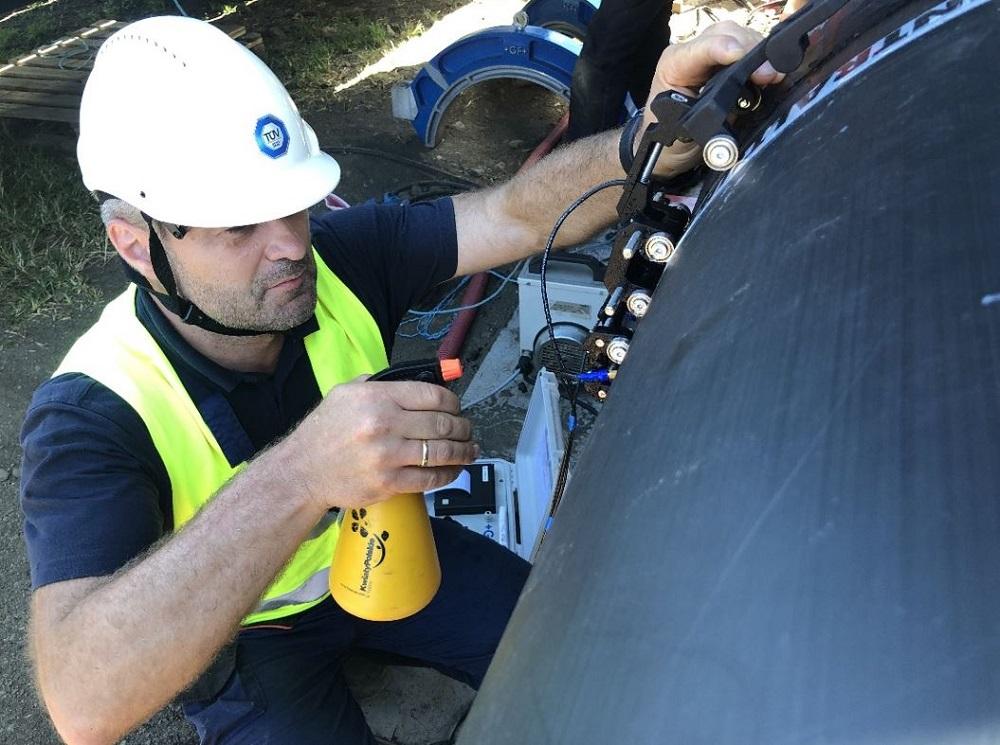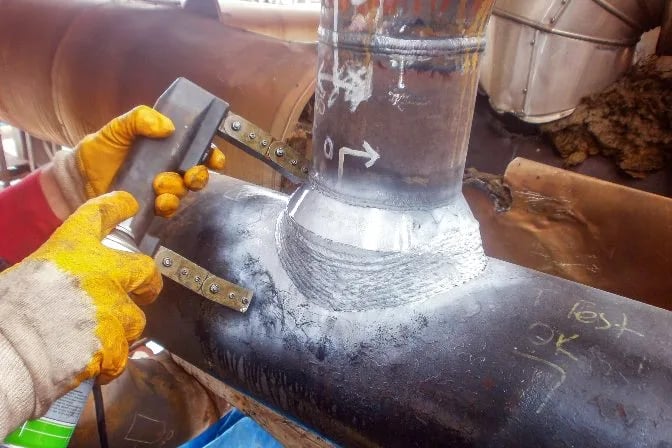Optimize Performance: Proactive Pipeline Welding Inspection Approaches
Comprehensive Introduction of Pipe Welding Evaluation Treatments
Pipeline welding inspection treatments play a critical function in guaranteeing that bonded links meet rigorous sector standards and specifications. From careful pre-welding assessments to extensive post-weld assessments, a distinct evaluation procedure is vital for maintaining the architectural stability of pipes.
Pre-welding Assessment Preparations
Before starting the welding process, thorough pre-welding assessment preparations are necessary to guarantee the honesty and quality of the weld joint. These prep work involve a careful examination of the materials to be bonded, the welding equipment, and the job environment. First of all, the products should be checked for any flaws, impurities, or disparities that can endanger the weld. This includes checking for correct product grades, dimensions, and surface area problems. Pipeline Welding Inspection. Additionally, the welding devices requires to be inspected to validate that it remains in excellent working condition, adjusted correctly, and ideal for the specific welding process. Any concerns with the tools should be dealt with immediately to avoid defects in the weld. Finally, the workplace need to be reviewed for sanitation, correct air flow, and safety measures to ensure a conducive setting for the welding operation. By performing comprehensive pre-welding assessment preparations, prospective problems can be determined and solved beforehand, bring about high-grade and trusted weld joints.
Welding Treatment Certification
Thorough pre-welding assessment preparations lay the structure for the crucial process of Welding Treatment Qualification, ensuring the stability and quality of the weld joint. Welding Procedure Credentials (WPQ) is a vital step in the welding process that entails testing and accrediting welding procedures to guarantee they fulfill certain standards and demands. The WPQ procedure usually consists of welding procedure spec growth, welding procedure certification screening, and documents of the results.
During welding treatment specification advancement, crucial details such as the welding process, welding products, joint layout, and welding parameters are defined to produce a comprehensive treatment. Ultimately, welding procedure qualification testing is carried out to confirm the proposed procedure's integrity. This testing commonly entails welding examination coupons that go through numerous mechanical and non-destructive tests to examine the weld's top quality and adherence to the specified standards.
In-process Weld Assessment
Throughout the welding procedure, in-process weld inspection plays a critical role in making certain the quality and honesty of the weld joint - Pipeline Welding Inspection. This type of evaluation entails keeping track of the welding specifications, analyzing the weld bead formation, and identifying any potential flaws or stoppages as they occur. By carrying out in-process weld assessments, welding drivers can without delay deal with any kind of issues that may occur, consequently protecting against more defects and making sure that the final weld fulfills the needed specs
Usual methods utilized for in-process weld inspection include aesthetic inspection, fluid penetrant screening, magnetic particle screening, ultrasonic testing, and radiographic screening. Overall, in-process weld assessment is essential for preserving the top quality and reliability of welded pipelines.
Non-destructive Screening (NDT)
Non-destructive Screening (NDT) is an essential method employed in pipe welding inspection to evaluate the stability of weld joints without creating damages to the bonded structure. By using different NDT strategies, inspectors can assess the high quality of welds and recognize any defects or interruptions that may jeopardize the architectural soundness of the pipe. Typical NDT methods used in pipeline welding examination include Radiographic Screening (RT), Ultrasonic Screening (UT), Magnetic Fragment Testing (MPT), Liquid Penetrant Testing (LPT), and Visual Screening (VT)
RT includes the use of X-rays or gamma rays to generate pictures of the internal structure of the weld, permitting assessors to find problems such as porosity, cracks, or insufficient combination. Furthermore, VT involves visual examination of welds to determine any noticeable blemishes.
Post-weld Assessment and Paperwork

Paperwork of post-weld inspection searchings for is vital for keeping quality assurance documents and guaranteeing conformity with market standards and guidelines. Detailed reports should include details regarding the examination techniques made use of, the place and nature of any kind of problems located, and any kind of restorative activities taken - Pipeline Welding Inspection. Correct documentation not only serves as a record of the weld's high quality however also help in future upkeep and examination procedures
Final Thought

Finally, pipe welding examination treatments play a crucial function in making certain the high quality and honesty of welds. From pre-welding linked here inspections to post-weld paperwork, each action is vital in keeping the safety and effectiveness of pipes. By adhering to recognized treatments and performing extensive examinations, potential problems can be determined and resolved before they result in expensive repair services or failings. Overall, adherence to proper assessment methods is vital this to the success of pipe welding projects.
From precise pre-welding evaluations to detailed post-weld evaluations, a well-defined evaluation process is important for maintaining the structural stability of pipelines. By conducting in-process weld inspections, welding operators can without delay resolve any kind of problems that may develop, thus avoiding additional problems and ensuring that the last weld satisfies the required requirements.
Typical techniques used for in-process weld inspection consist of aesthetic examination, fluid penetrant testing, magnetic bit testing, ultrasonic testing, and radiographic testing.Non-destructive Screening (NDT) is an important approach utilized in pipeline welding evaluation to assess the honesty of weld joints without creating damages to the welded structure. Post-weld evaluation involves different techniques to assess the welds for defects, including visual assessment, dye you could try these out penetrant testing, magnetic bit screening, ultrasonic screening, and radiographic testing.